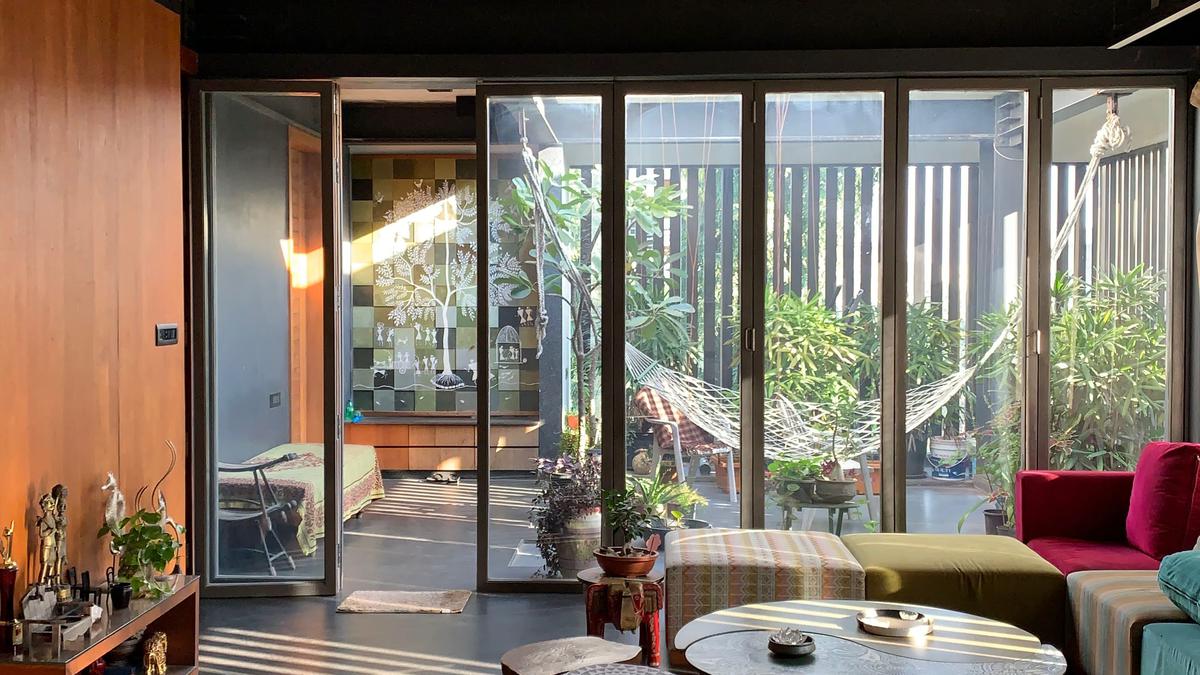
When steel is green
The Hindu
Pooja & Piyush Associates' steel construction projects demonstrate green quotient, fast execution, flexibility, and recyclability. Their Heer Radha Residence and Nuts and Bolts Residence feature steel columns, salvaged wood, PVC, clay blocks, and rotatable louvres. These projects are climate-responsive, use natural insulation, and reduce the carbon footprint.
Talk about sustainable modes of construction, and the first concept that emerges is mud, clay bricks, fly ash, plantation or salvaged wood, to mention a few. The entire concept revolves around using materials with the least carbon footprint, especially locally sourced. The construction methodologies are expected to be location-centric and site-sensitive, even the design tweaked to meet local conditions and modes of construction and material use.
In this context, steel as a material features on the other side of the spectrum, given its acknowledged carbon footprint. Incidentally, the most sustainable construction methodologies tout the absence of steel to reiterate their strong green quotient. Yet, a walk through the works of Architects Piyush Kapadia and Pooja Kapadia of Pooja & Piyush Associates speaks a totally different story; the duo’s projects come with a strong green quotient where the construction is done not with mud or clay but steel.
Veering towards a complete steel construction, their buildings are assembled in record time, akin to a set of Lego blocks where the entire structure is erected using steel pipes connected in place using nuts and bolts. The steel story of Pooja and Piyush began when they received the project Heer Radha Residence to execute. Just before this project, the duo had to complete an industrial project where the execution time was extremely short, prompting them to adopt pre-engineered techniques to complete the project in a record two and half months.
The execution of this project made both realise that similar techniques and approaches can also be extended to residences too while keeping the green quotient high. Thus started their tryst with steel, yet keeping intact the sustainable aspect.
“The embodied energy going into steel is accounted for when it is manufactured. But if it can be dismantled and reused, the reuse of it negates this, bringing in the sustainability factor. The fact that the construction is fast, durable, can be easily altered and is less labour intensive also makes it a fine choice for residential and commercial buildings”, explains Piyush on the choice of steel as a green material. He further opines that it is all about the mindset of the unconventional nature of the structure.
Adopting this perspective, Piyush and Pooja came up with a composite steel structure for the Heer Radha Residence, where the structure comes with no lintels, no overhangs, and no sunshades. PVC replaces the use of plywood, and salvaged wood is used where wood is required. There is also an absence of plastering as well as POP, resulting in the reduction of cement used to the tune of 55 per cent as compared to a conventional structure.
Since there is no concrete but only steel being used, the foundation required is also light, with the columns and beams featuring in the building being steel sans the concrete. The walls are built using clay blocks where they remain exposed without plastering, once again saving the use of cement and sand, all of which pare down the carbon footprint.

We know birds, animals and insects constantly communicate with each other by making certain sounds. But when we think about plants, we do not ever think of them communicating. Charles Darwin, an eminent biologist, thought otherwise. Plants might appear the quiet, silent and solitary type of organisms but they have a complex way of communicating which is interesting and important for their survival.










